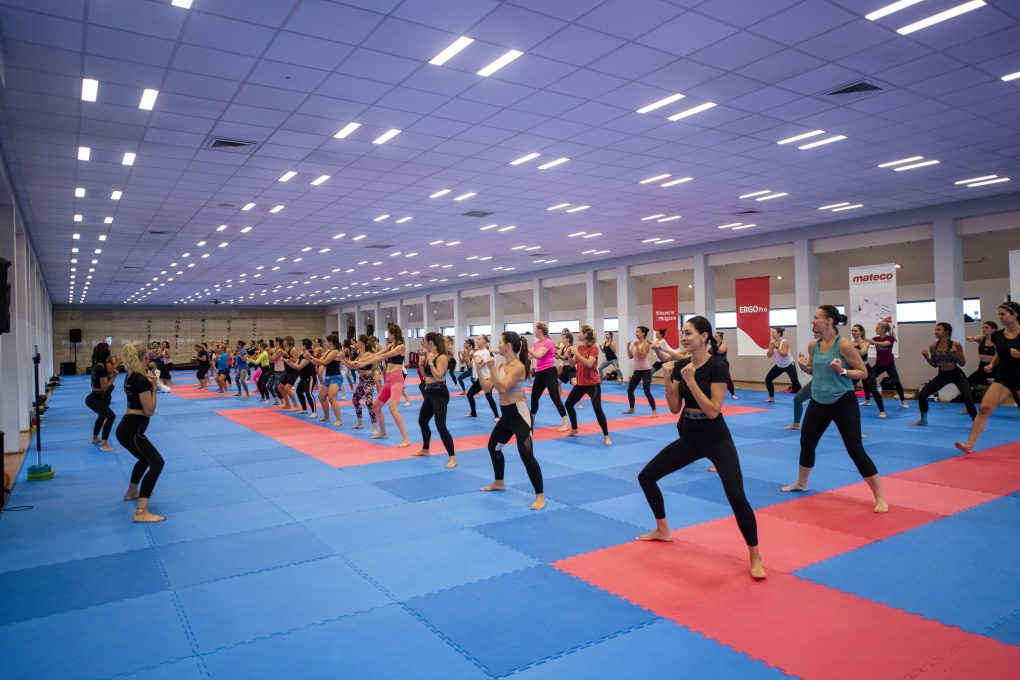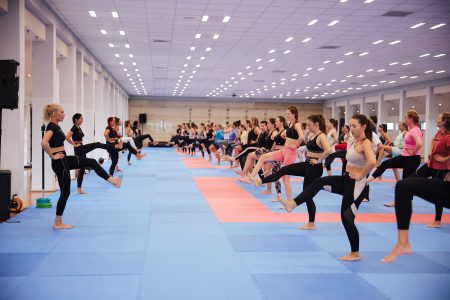
Physical Exercise and the Post-COVID-19 Syndrome
Over the past year, the word pandemic has become ubiquitous and continues to stir fears. We already know a lot about our enemy and how it changes (mutates), we are equipped with vaccines and most importantly – we are not helpless. Today, however, we are not only afraid of the virus itself, but also of the effects of falling ill with COVID-19. How to protect yourself from the post-COVID syndrome and make the body fully recover after the disease?
Post-COVID-19 syndrome
There are two types of post-COVID syndrome. The first one, the so-called PCS (post COVID-19 syndrome), is defined as the ongoing syndrome of symptoms in patients who have recovered from COVID-19 infection. The second one is the children’s post-COVID-19 syndrome, or PIMS (pediatric inflammatory multisystem syndrome temporally associated with SARS-CoV-2). Similar to the first case, it is a complication after COVID-19. The reason is the reaction of children’s immune system to the virus. PIMS appears 2-4 weeks after the infection and may also occur after asymptomatic COVID-19.
The causes of post-COVID-19 syndrome in adults are:
- lung failure,
- post-infection immunosuppression, or decreased immunity,
- complications of comorbidities,
- pulmonary fibrosis.
Most patients have mild or asymptomatic disease, while 5–8% of infected patients develop respiratory distress syndrome. Does this mean that the vast majority of patients may think that PCS does not concern them? Unfortunately, every convalescent patient is at risk of developing the post-COVID-19 syndrome.
PCS symptoms
Let’s take a closer look at the problems and symptoms that patients with PCS may face:
- exercise-induced breathlessness,
- chronic dry cough,
- exercise limitations,
- reduced quality of life,
- symptoms of myocardial damage, including heart failure and myocarditis, or the worsening of a pre-existing cardiovascular disease,
- changes in the sense of smell and taste,
- the so-called brain fog, described as difficulty concentrating and remembering.

How to fight the post-COVID-19 syndrome?
Currently, the role of physical activity in returning to good condition is emphasized all over the world. In Poland, people who had COVID-19 can benefit from rehabilitation reimbursed by the National Health Fund up to 12 months after the end of COVID-19-related treatment. As we can read on the website of the Ministry of Health and the National Health Fund, rehabilitation lasts from 2 to 6 weeks, and patients are taken care of by a doctor, nurse, psychologist and physiotherapist. The program includes, among others, endurance training classes, breathing exercises, effective coughing exercises, general fitness and outdoor exercises, as well as walking and relaxation training.
The importance of exercise in recovery has been proven by British scientists whose research results were published in the journal “Chronic Respiratory Disease”. The study was completed by 30 participants who took part in rehabilitation classes twice a week for 6 weeks. Each of them experienced health effects after contracting COVID-19. The program included aerobic exercise such as walking or treadmill activities, as well as strength training for the arms and legs. The results show a significant improvement in exercise capacity. The subjects felt an improvement in general well-being and cognitive functions. During the program, none of the participants experienced side effects. Therefore, it can be concluded that physical activity individually adjusted to the patient’s health condition is a safe and effective form of rehabilitation in post-COVID-19 syndrome.
Another study looked at the effects of COVID-19 on muscle function, exercise, mood, and sleep quality. The study included 48 participants who’d suffered from COVID-19 and they were observed for 12 weeks. Muscle weakness was observed in 35.4% of the participants. The physical activity rate was low in 39.6%, moderate in 33.3%, and high in 27.1% of the participants. Anxiety, depression and poor sleep quality were observed in 33.3%, 29.2% and 50% of the respondents, respectively. This shows that the need for intervention and the inclusion of physical activity and relaxation techniques in convalescent patients is great.

Return to active lifestyle
There is no single pattern, based on scientific evidence, that would define the ideal way to get back to an active lifestyle for every patient. The key to success is caution and gradually increasing the intensity of your training. Individualized exercises based on the patient’s subjective tolerance will allow to obtain the best results and minimize the risk of complications.
In the recommendations for British doctors, we can read that patients should start exercising not earlier than at least seven days after the symptoms disappear, and it is recommended to gradually return to the level of activity before the disease or higher. If the patient was not physically active prior to COVID-19, it is recommended that you make a lifestyle change to become more active. In people who experience recurrence of symptoms such as cough, shortness of breath, palpitations, fever and changes in smell and taste, it is recommended to stop exercising, seek medical advice if necessary, and restart the process of returning to activity after the symptoms have resolved. Grading your exercise progression includes lengthening the duration of your workout and increasing the intensity of your exercise.
My advice for convalescents is:
- set a goal for yourself and evaluate your abilities,
- if you do not have symptoms, start with walking, light activity and gradually increase the duration and intensity of training,
- if you experience discomfort and shortness of breath during exercise, consult your doctor and reduce the intensity of training,
- you were not active before COVID-19? Now is a good time to start. At the beginning, walks will be a good solution for you!
You all know how important physical activity is in everyday life. It helps not only to shape your body, but also provides endorphins, thanks to which we can stay healthy, influence our immunity or improve efficiency. It is for this reason that physical activity is an important part of rehabilitation in the post-COVID-19 syndrome. Everyone who had COVID-19, may have experienced it differently, ranging from no symptoms to hospitalization. Regardless of this, it is recommended for all convalescents to return to physical activity, based on their individual abilities. Do not postpone health for later!
Bibliography:
- Daynes E, Gerlis Ch, Chaplin E, et al. Early experiences of rehabilitation for individuals post-COVID to improve fatigue, breathlessness exercise capacity and cognition – A cohort study. Chronic Respiratory Disease. 2021; 18: 1–4
- Oronsky B, Larson Ch, Hammond T, et al. A Review of Persistent Post-COVID Syndrome (PPCS). Clinical Reviews in Allergy & Immunology. 2021
- SalmanD, Vishnubala D, Le Feuvre P, et al. Returning to physical activity after covid-19. BMJ. 2021; 372:472
- Tanriverdi A, Savci S, Kahraman B, Ozpelit E. Extrapulmonary features of post-COVID-19 patients: muscle function, physical activity, mood, and sleep quality. Irish Journal of Medical Science. 2021









Comments No Comments
Join the discussion…